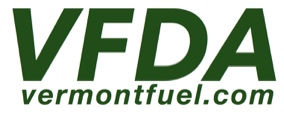Vermont Underground Storage Tank (UST) Rules
Vermont law requires some underground tanks to be registered with the state if the tanks contains diesel, fuel oil, kerosene, gasoline, or waste oil.The only tanks that are exempt are those LESS than 1100 gallons and only those found on farms or homes. Commercial underground tanks are not exempt from registration.
If an UST is out of service 90 days or less:
1. Notify the UST Program by phone 802-828-1138
2. Fuel in the tank should be below the lowest draw-off point.
3. Vent line must be kept open.
4. All openings to the tank at the tank top (fill ports, pumps etc.) should be secured to prevent tampering.
5. Signs should be posted so that customers and suppliers know the tanks are out of service.
6. Weekly release detection monitoring is still required, unless the tank holds less than 1 inch of product.
If an UST is out of service greater than 90 days:
Comply with the list above, except the tank must be pumped empty. “Empty” is defined as a condition in which regulated substance has been removed from the tank to the extent that no more than 1 inch of residue, or 0.3 percent by weight of the total capacity of the UST, remains in the system.
If an UST tank is out of service for a year or more it must be closed in accordance with UST Rules §8-604.
Out-of-Service Tanks If a tank is out of service for more than 90 days it must be emptied. A tank is empty when all materials have been removed so that no more than 1 inch of residue, or 0.3 percent by weight of the total capacity of the tank, remains in the tank. This usually requires pumping of product from the fill port or other access port. The vent line(s) must be left open and functioning; and all other lines, gauge openings, manways, pumps and ancillary equipment must be capped or otherwise secured to prevent unauthorized use or tampering. Vermont UST Regulations allow double wall inactive underground tanks to remain in the ground for ONE year, as long as the tanks meet the double wall requirement.
No interest loans are available from the Agency of Natural Resources to assist with the cost of tank removal. For more information, contact June Reilly by calling 802-522-0231.
When are permits required?
The Vermont UST Rules say a construction permit must be issued when a substantial alteration is being done at a facility. The rules define substantial alteration as any change made to an underground storage tank system that requires the top of the tank and/or any portion of the piping to be uncovered.
If you are doing any of the following work to your tank system, you need a construction permit for:
1) Tank and piping replacement
2) Adding a tank
3) Replacement of all product piping
4) Replacement of primary piping, keeping the existing secondary
5) Interior lining of a tank (single or double wall)
6) Adding or removing a piping manifold to two tanks or more
7) The replacement of tank top sumps
8) Replacement of spill bucket may need a construction permit
Whenever you excavate to the tank top or expose piping, an environmental site assessment is required to be completed by a qualified person.
See links below for more information.
Vermont Undergound Storage Tank Regulations
Effective as of October 26, 2020
Vermont DEC UST Staff contacts
Guidance on Testing of Sumps, Spill Prevention and Overfill Devices
Residential Home Heating Oil Underground Storage Tank Removal Guidance Brochure
2020 Underground Storage Tank Inspection List for Permitted Tanks


